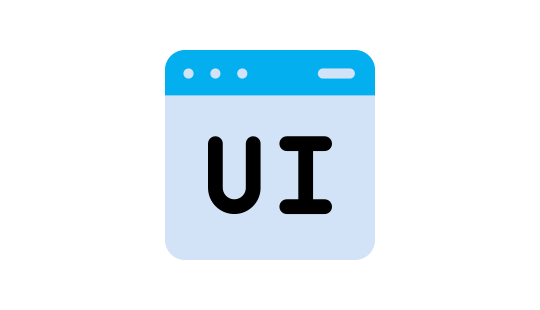Introduction
Developing your design thinking abilities and staying on top of industry trends is essential in the ever-changing field of User Experience (UX) design. A thoughtfully selected reading list can be a UX designer’s greatest ally, providing understanding, motivation, and useful information. These 10 books are essential reading for everyone interested in UX design, regardless of experience level or in-between, as they will help you develop your abilities and widen your viewpoint.

“Don’t Make Me Think” by Steve Krug
Steve Krug’s “Don’t Make Me Think” is a classic in the UX design realm. Known for its straightforward and practical approach, this book provides fundamental principles for creating intuitive and user-friendly interfaces. Krug emphasizes the importance of simplicity in design, urging designers to create experiences that users can navigate effortlessly. With its humorous tone and real-world examples, this book serves as an excellent foundation for understanding the basics of user-centric design.
“The Design of Everyday Things” by Don Norman
Don Norman’s “The Design of Everyday Things” is a seminal work that explores the psychology of design. Norman delves into the relationship between humans and the products they interact with daily, shedding light on the principles that make design effective or frustrating. By understanding the cognitive processes of users, UX designers can create more intuitive and satisfying experiences. This book is a timeless guide for anyone looking to design products that seamlessly integrate into users’ lives.
“Seductive Interaction Design” by Stephen Anderson
Stephen Anderson’s “Seductive Interaction Design” takes a unique perspective on the emotional aspect of UX design. Anderson argues that successful design goes beyond functionality, aiming to create experiences that engage users emotionally. Through case studies and practical examples, this book provides insights into designing interfaces that captivate and retain users’ attention, making it an essential read for those seeking to create compelling digital experiences.
Josh Seiden and Jeff Gothelf, “Lean UX: Designing Great Products with Agile Teams”
As the industry shifts towards more agile methodologies, “Lean UX” by Jeff Gothelf and Josh Seiden offers valuable insights into integrating UX design seamlessly into agile development processes. This book advocates for a collaborative and iterative approach, emphasizing the importance of quick feedback loops and continuous improvement. For UX designers working in fast-paced environments, “Lean UX” provides actionable strategies for delivering user-centric designs in an agile framework.
“Hooked: How to Build Habit-Forming Products” by Nir Eyal
Understanding the psychology of user behavior is crucial for UX designers, and Nir Eyal’s “Hooked” provides a deep dive into the art of creating habit-forming products. Eyal introduces the Hook Model, a framework for building products that keep users coming back. By exploring the psychology behind user engagement, this book equips designers with the knowledge to create products that not only meet users’ needs but also become integral parts of their daily routines.
“The Elements of User Experience” by Jesse James Garrett
Jesse James Garrett’s “The Elements of User Experience” is a comprehensive guide that breaks down the UX design process into five essential components: strategy, scope, structure, skeleton, and surface. This foundational book provides a clear framework for understanding the different layers of user experience design, offering practical insights into creating cohesive and user-centric digital products. Whether you’re a novice or an experienced designer, this book serves as a valuable reference for navigating the complexities of UX design.
“Thinking, Fast and Slow” by Daniel Kahneman
While not specifically a UX design book, Daniel Kahneman’s “Thinking, Fast and Slow” explores the dual systems of human thinking and decision-making. UX designers can benefit from understanding the cognitive biases and heuristics that influence user behavior. By applying the principles outlined in Kahneman’s work, designers can create interfaces that align with users’ mental models and improve overall user satisfaction.
Leah Buley’s “The User Experience Team of One”
In “The User Experience Team of One,” Leah Buley addresses the challenges faced by solo UX designers working in small teams or organizations. The book provides practical advice on how to navigate the design process independently, from research to implementation. Buley’s insights are precious for designers wearing multiple hats, offering strategies for prioritizing tasks, collaborating with stakeholders, and advocating for user-centered design within the organization.
“Measuring the User Experience” by Thomas Tullis and William Albert
Thomas Tullis and William Albert’s “Measuring the User Experience” focuses on the quantitative aspect of UX design—measuring and evaluating the user experience. The book introduces various methods for collecting and interpreting data, including usability testing, surveys, and analytics. Understanding how to measure the impact of design decisions is crucial for continuous improvement, and this book equips designers with the tools to gather meaningful data and make informed design choices.
David and Tom Kelley, “Creative Confidence”
“Creative Confidence” by Tom Kelley and David Kelley, co-founders of IDEO, explores the intersection of creativity and innovation. While not strictly a UX design book, its principles are highly applicable to the design thinking process. The authors emphasize the importance of cultivating a mindset that embraces experimentation, iteration, and collaboration. By fostering creative confidence, UX designers can approach challenges with a fresh perspective, leading to more innovative and user-centric solutions.
Conclusion
Building a solid foundation in UX design requires a combination of practical experience and continuous learning. The books mentioned in this ultimate reading list offer a diverse range of insights, from fundamental principles to advanced strategies, catering to designers at different stages of their careers. By incorporating these titles into your reading repertoire, you’ll not only expand your design thinking but also stay inspired and informed in the dynamic field of UX design. Whether you’re aiming to create more intuitive interfaces, integrate design into agile workflows, or understand the psychology of user behavior, these books will serve as valuable companions on your journey to becoming a proficient and innovative UX designer.
